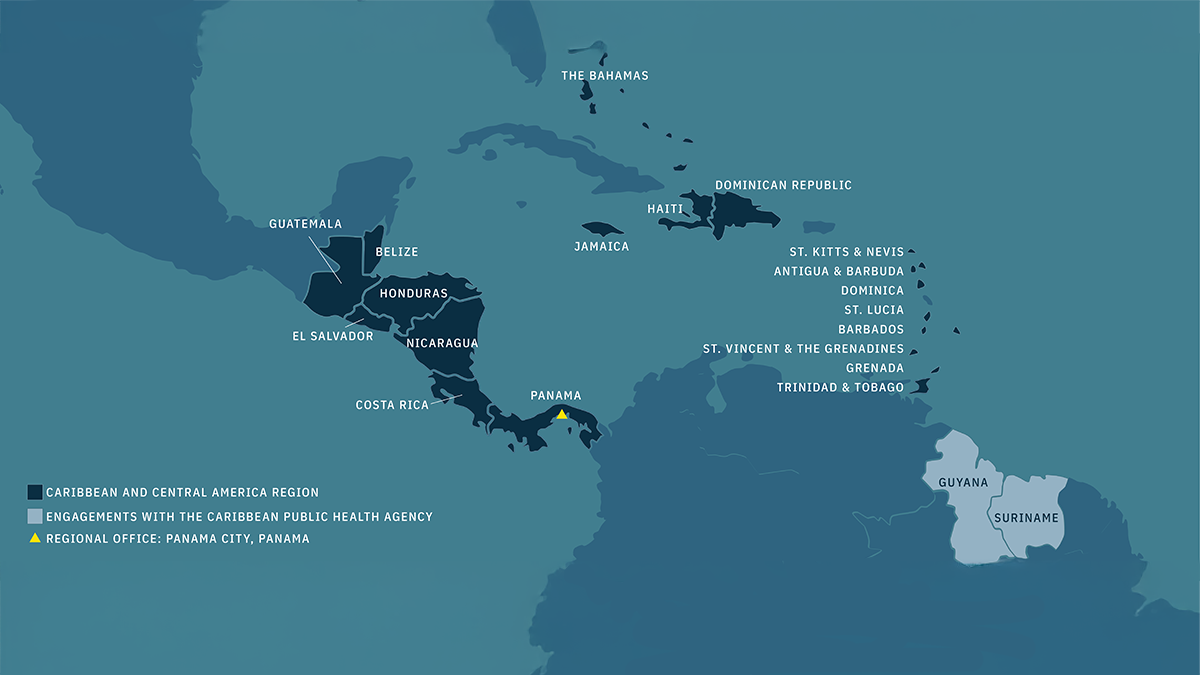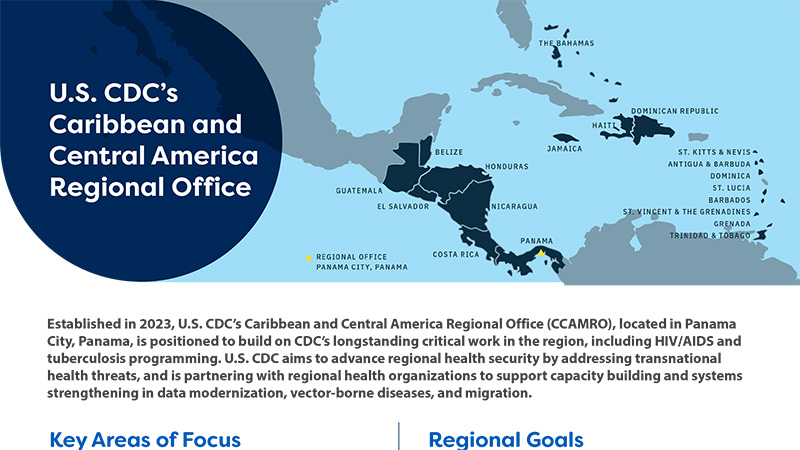At a glance
Established in 2024, U.S. CDC’s Caribbean and Central America Regional Office (CCAMRO), located in Panama City, Panama, is positioned to build on CDC’s longstanding critical work in the region. Strategic global partnerships strengthen health systems in the region, reducing strain on U.S. resources and enhancing readiness against health threats. U.S. CDC advances regional health security to stop disease outbreaks at their source, making America safer.
Overview

The U.S. CDC's Caribbean and Central America Regional Office (CCAMRO), located in Panama City, Panama, works to strengthen partnerships with the United States' closest neighbors across 19 countries and island states. The office works with existing CDC country offices and partners to advance regional health security for a safer, stronger and prosperous America. CDC's CCAMRO was launched in July 2024.
CDC CCAMRO's strategic approach includes engagement with regional partners and bilaterally with countries including Panama, Trinidad and Tobago, Jamaica and Guatemala. CCAMRO also coordinates closely with the CDC country office in Mexico, with a focus on border health.
CDC CCAMRO works alongside CDC subject matter experts across the agency to strengthen relationships with regional partners for improved global health preparedness and response. CCAMRO seeks to improve the timely detection of emerging health threats, the ability to stop outbreaks at the source and to enhance knowledge and information exchange.
Key areas of focus
Together with public health experts from CDC headquarters, the CCAMRO works to:
- Fortify strategic relationships with regional health partners such as CARPHA and COMISCA, multilateral organizations, partner governments and academic institutions.
- Improve knowledge exchange and information sharing, as well as peer-to-peer interchange for shared capacity building.
- Improve early warning systems for timely global health threat detection and rapid response.
- Strengthen collaboration with regional centers of excellence including the Gorgas Memorial Institute, SENACYT, INDICASAT, and the CARPHA Reference Laboratory.
Regional goals
U.S. CDC and partners collaborate to:
- Strengthen existing and develop new partnerships to improve regional health security objectives.
- Improve partner coordination, collaboration, and communication.
- Advance data modernization initiatives through improved disease surveillance and health information systems.
- Strengthen surveillance systems to better understand and predict disease trends.
- Promote public health science and research to ensure evidence-based health policy, guidelines, and recommendations.
- Strengthen the capacity of governments to effectively respond to public health emergencies.
- Improve ability of countries in the region to address vector-borne and vaccine preventable diseases.
- Promote science and innovation in public health.
- Strengthen public health laboratories.

